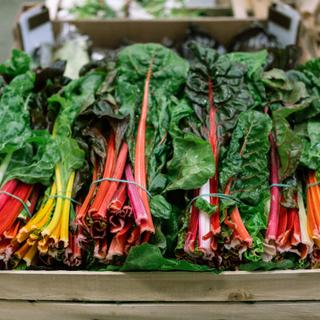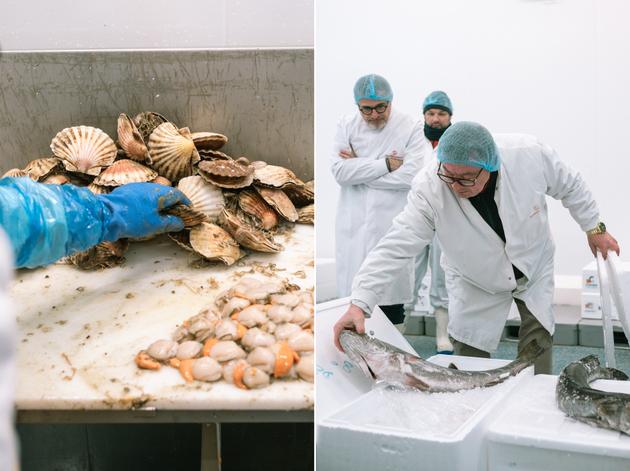


From beef tongues to yuzu fruit: The extraordinary world of the Rungis market
FeatureThe world's largest fresh produce market, just south of Paris, feeds 18 million people and has an annual turnover of €10,299 million.
Rungis is beautiful at night. The sprawling market town on the southern outskirts of Paris never sleeps. And at 3:30am, the uninterrupted waltz of lorries and delivery vans under the dim light of the street lamps is hypnotic. The vehicles whirl around at breakneck speed – Rungis has its own laws and its own highway code – in this strange city criss-crossed by avenues, covered with warehouses and swarming with handlers of everything from crates of tomatoes to a carcass of beef.
The world's largest fresh produce market is a behemoth without equal: 232 hectares in surface area, more than 1,200 companies and almost 13,000 employees, and, according to the latest activity report published in 2022, more than 1.7 million tonnes of food products processed – 68% of them fruits and vegetables.
Without this colossal hub, the Ile-de-France region, by far France's most populous, where 65% of buyers are concentrated, and a good part of the rest of the country would have a hard time filling their plates. "I'm here to feed 18 million people," said Stéphane Layani, the market's CEO since 2012, as he sipped a double espresso at La Cantine du Troquet. The restaurant, open to the public like the 18 others at Rungis (purchases from the market are reserved for professionals), opens before daybreak, offering soft madeleines and prizewinning pâté en croûte under the guidance of chef Stéphane Bertignac.
Rungis' turnover is rising steadily, reaching €10,299 million in 2022. It welcomes market traders, retailers and restaurateurs, with the latter representing 15% of annual sales. They are nevertheless hard to find on site. "Chefs? We don't see them anymore," said Serge Nadaud. This market wholesaler, president of the National Confederation of Tripe Butchers of France, watches over the tripe sellers' section dotted with beef tongues, livers and veal heads, ready to be boned. "Before, they or their clerks would come by at least twice a week to find the best sweetbreads. We could present the products, negotiate face to face, there was that human relationship that made the market so charming. Today, that's over: they come twice a year to scout, and that's it."

Nadaud sits at a table at Le Veau qui Tète, the restaurant nestled in the heart of the tripe section, which he bought along with other wholesalers to lift it out of a financial hole. At the counter, men in white coats sip coffees and peppermint cordial as they trim the fat. "This is where we still get our customers," said Nadaud, as a trilogy of veal (sweetbreads, kidneys, head) and tempura of calf's caul appear on the table – at 4:30am.
You have 70% of this article left to read. The rest is for subscribers only.
